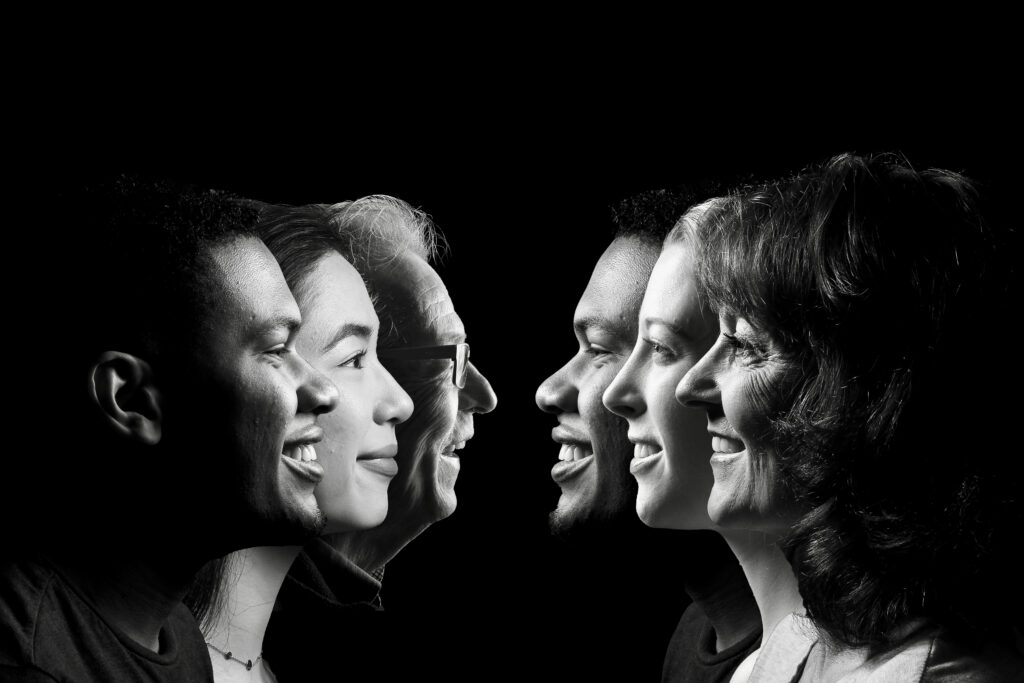

Features
Benefits & Pensions
Employee benefit needs vary greatly in the multigenerational workforce: Research
March 30, 2023
By
Todd Humber
 Many employers in Canada have five generations of workers on their payroll. Photo: Adobe Stock
Many employers in Canada have five generations of workers on their payroll. Photo: Adobe Stock Canadian workers can have very different benefit needs and expectations, depending on both their age and where they are in life.
Generation Z, for example, are using drug benefits most often for ADHD/ADD, contraceptives and antidepressants. Boomers and Traditionalist, on the other hand, are using cardiac care and diabetes medications more frequently, according to new research from Medavie Blue Cross.
When it comes to extended health care (EHC) benefits, mental health practitioners are among the top utilized benefits for younger employees — a benefit that doesn’t even appear in the top five for Boomers and Traditionalists.
Marie-Helene Dugal, manager, pharmacy benefit strategy at Medavie Blue Cross, said that with five generations in the workforce, employers need to keep one word in mind when designing benefit plans: Flexibility.
“Offering health spending accounts or personal wellness accounts are ways to kind of complement benefit plans with a bit more options, where plan participants are able to select the benefits where they feel they need more coverage,” she said.
Employers can offer staff credits that can be used to select different levels of coverage, with leftovers being rolled into health spending accounts, RRSP contributions or even buying extra vacation days, she said.
“With multiple generations and the different profiles of people in the workplace at the same time, this type of approach is certainly one that we’re seeing getting increasingly selected to be able to provide an attractive plan,” said Dugal.
Rising cost of specialty drugs
One area that is both effective and expensive are biologics. In Medavie’s research, biologics for autoimmune diseases cracked the top five drug benefits for every generation. (See below.)
These drugs are increasingly complex, she said, and are used to treat rarer and more complicated conditions. The price tag attached starts at about $10,000 and can run into hundreds of thousands of dollars per year.
“Those specialty drugs account for one to two per cent of all claims, but in terms of costs they tend to represent at least a third of all the drug spending,” said Dugal.
“They’ve been a game changer for many diseases where people used to stay disabled, unfortunately, and not been able to work and had terrible quality of life.”
That being said, the cost of carry can be a concern for employers. Plan sponsors are advised to follow a managed formulary for these drugs, “meaning that a committee or third party” has looked at the individual value each drug can bring to the plan and makes recommendations to ensure the ones that provide the best value for their costs are selected.
Extended health care (EHC)
Mental health is showing up in the top five extended health care benefits for Generation Z, Millennials and Generation X, according to the research.
Dugal said society is beyond the tipping point on mental health, and the awareness is much higher than it was 20 or 30 years ago.
“I think that message has resonated much more with the younger generations, whether that’s through social media or different avenues that have kind of opened up the conversation and removed some of the stigma,” she said.
The fact that it doesn’t crack the top five in EHC usage for Boomers and Traditionalists is interesting, and there might still be a stigma effect for those cohorts, said Dugal.
“There is still a lingering effect of, ‘Well, that is just not something that we’re used to talking about or thinking about. I should be dealing with this on my own.’ So there’s largely that effect,” she said.
There has also been an expansion of the coverage for mental health benefits. For example, Medavie has expanded the list of health-care professionals it recognizes to be certified mental health practitioners.
“You’re not restricted to seeing a psychologist — you could be seeing a social worker, or another counsellor that’s properly certified and can help you in many cases just as well,” said Dugal.
Technology is also providing help on the mental health front, with things like apps, text-based therapy and virtual care, she said.
“That removes some barriers in terms of access,” she said, as people don’t need to travel to appointments and some may feel shy about talking to someone face-to-face.
There has also been increasing investment by employers in mental health, with caps being raised.
“A combined $500 for all private practitioners, when you’re talking about therapy, that’s going to give you maybe five hours of therapy,” she said. “If you have anything of serious concern, that’s not going to get you far.”
Many companies have responded by expanding the mental health coverage, and separating it from other EMC coverage with its own cap. Talent Canada recently wrote about Sun Life’s benefit program, which offers its employees up to $12,500 per year in mental health coverage.
Top 5 drug benefits by generation
Gen Z
- Add/Adhd
- Biologics for autoimmune diseases
- Respiratory
- Contraceptives
- Antidepressants
Millennials
- Biologics For Autoimmune Diseases
- Antidepressants
- Add/Adhd
- Diabetes
- Respiratory
Gen X
- Biologics For Autoimmune Diseases
- Diabetes
- Antidepressants
- Respiratory
- Multiple Sclerosis
Boomers
- Diabetes
- Biologics For Autoimmune Diseases
- Cardiac
- Cancer
- Respiratory
Traditionalists
- Cardiac
- Diabetes
- Cholesterol Lowering
- Biologics For Autoimmune Diseases
- Gastrointestinal
Top 5 EHC benefits by generation
Gen Z
- Mental Health Practitioners
- Glasses
- Massage
- Physio
- Diabetic Supplies
Millennials
- Massage
- Mental Health Practitioners
- Physio
- Chiro
- Glasses
Gen X
- Massage
- Physio
- Glasses
- Mental Health Practitioners
- Chiro
Boomers
- Massage
- Physio
- Diabetic Supplies
- Glasses
- Chiro
Traditionalists
- Physio
- Diabetic Supplies
- Hearing Aid
- Glasses
- Massage
Source: Medavie Blue Cross
Print this page

